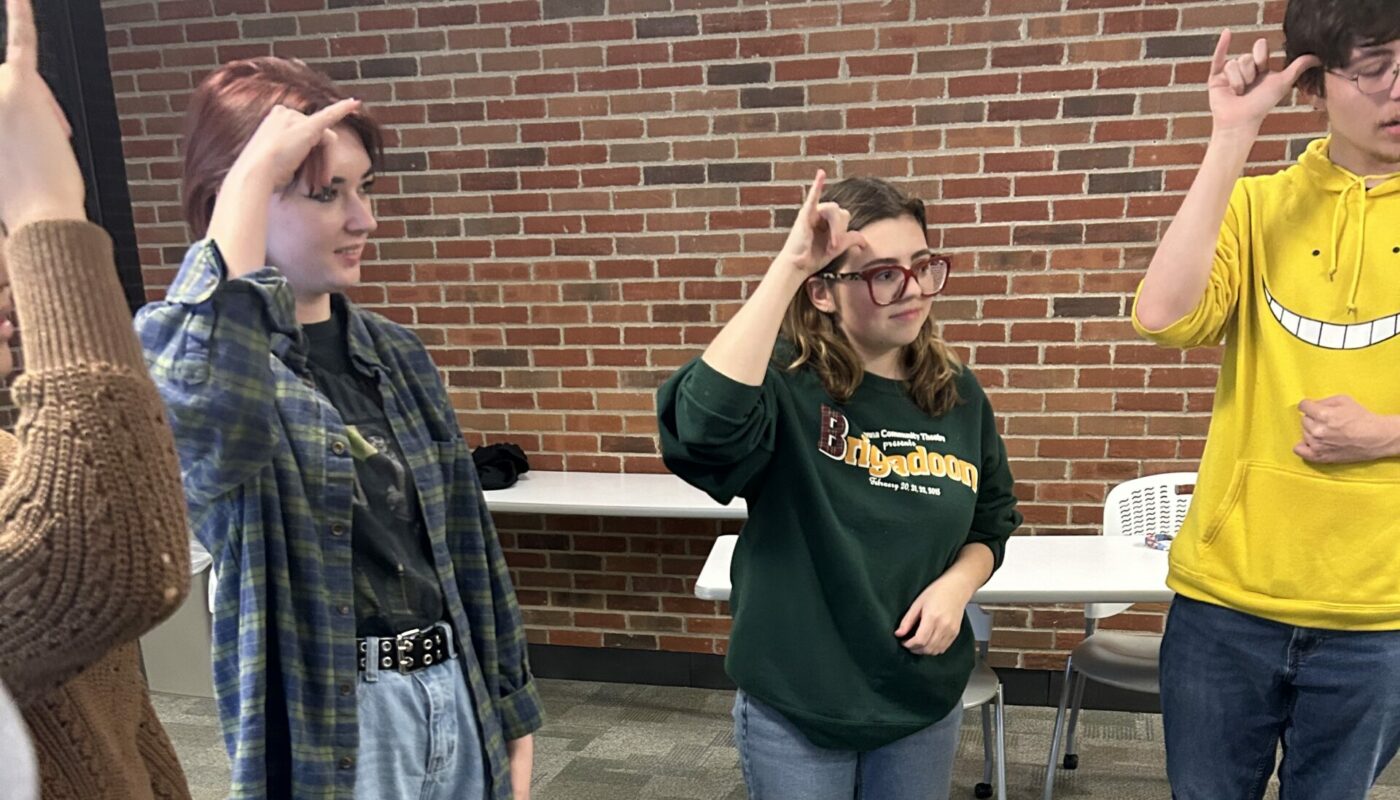The university’s new American Sign Language (ASL) club brings representation and education of the deaf community to campus. As a student organization created as another form of practicing sign language outside of the classroom, all are welcome regardless of proficiency levels to learn new ASL signs and the culture of the deaf community.
The ASL club was founded by sophomore Holly Stoner. The university is small and has experienced issues when trying to increase their language selection, so there are only two ASL courses at the university. Since the language requirement for many departments has been removed, an additional ASL course was canceled despite student interest in furthering their knowledge of ASL.
Recently Gerald Eichler is the only ASL professor who is deaf. He has always wanted the university to have an ASL club. He was excited to learn there was interest in creating the club and is serving as their faculty advisor.
”It’s more accepted [in the deaf community] to learn signs from somebody who is deaf than hearing,” Stoner said.
A former professor of the university—now teaching at Ohio University—Lori Woods, was asked to come to meetings and teach the signs in any of Eichler’s absences.
Woods taught the alphabet and other simple signs at ASL club’s first general meeting on Feb. 2.
“I had so much fun at the first ASL club meeting! The whole club was so welcoming, it doesn’t matter how much experience you have, they were all very patient and supportive while teaching us,“ sophomore Keelin Mccafferty said.
Deaf culture is not only the common experience of deafness, but also pride in the resilience of the deaf community. Rooted in communication, sign language has become an integral part of identity with over 300 global sign languages.
Deaf Advocacy focuses on rights such as the Americans Disabilities Act (ADA), which has ensured equal access for opportunities. Accessibility advocacy, for example, works to remove barriers with closed captions and sign language interpreters, allowing for easier experiences for deaf individuals.
At the university, sign language interpreters are available if needed; most ASL professors use them for the first day of classes but try to immerse their students into the language as the class progresses.
First year Vai Dennis said, “To remember these signs we also played some games typical in deaf culture. I relearned some of the ASL that I lost since high school. I have taken three years of ASL and I’m glad that there is a club for everyone to learn and put into practice.”
The club’s end goal is to be prepared for their Silent Dinner at the end of the spring semester. The dinner is an opportunity for ASL club members to execute what they’ve learned in general meetings.
General meetings are every other Friday (at least once a month) with an event following the meeting for students to apply what they learned.
To find more information about the organization and what they’ll be teaching at their next meetings, students can look at their Instagram at @capitalu_aslclub.


